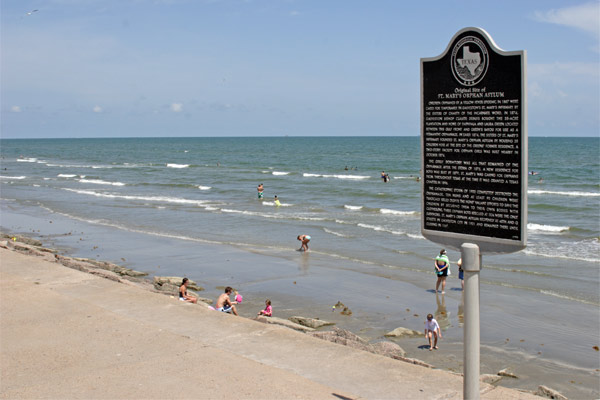|
|
Home | High-Res License | Website License | Free Pictures | About |
St. Mary's Orphan Asylum: MarkerPurchase / Licensing / Usage Rights (Image #C10919)
|
||||
 |
||||
 More Photos More Photos |
Texas | Page 19 | « Prev | Next » | |||
|
Purchase / Licensing / Usage Rights (Image #C10919)
|
||||
|
The Texas Historical Commission placed this historical marker on the seawall in Galveston, Texas in memory of the women and children lost at this location during the Galveston hurricane of September 8, 1900. This is the original site of St. Mary's Orphan Asylum; 10 nuns and at least 90 children died here when the powerful storm destroyed their orphanage. A statue memorializing all victims of the 1900 Storm is also nearby on the seawall, and a granite stone marker is in the nearby Municipal Cemetery at the location where 500 unidentified victims of the storm were buried. This marker is located near 69th street on the seawall and has the following inscription: Children orphaned by a yellow fever epidemic in 1867 were cared for temporarily in Galveston's St. Mary's Infirmary by the Sisters of Charity of the Incarnate Word. In 1874 Galveston Bishop Claude Dubuis bought the 35-acre plantation and home of Farnifala and Laura Green located between this gulf front and Green's Bayou for use as a permanent orphanage. In early 1874 the Sisters of St. Mary's Infirmary founded St. Mary's Orphan Asylum by housing 28 children here at the site of the Greens' former residence. A 2-story facility for orphan girls was built nearby in October 1874. |
||||
|
Architecture / Buildings | Hawaii | Sunrises / Sunsets | Wildlife / Animals | Babies
Hot Air Balloons | Colorado | Willie Nelson | NBA | Misc | Aircraft | Texas Home | Search | High-Res License | Website License | Free Pictures | About | Privacy Statement Copyright © 2006-2017, Allen Matheson
|
||||